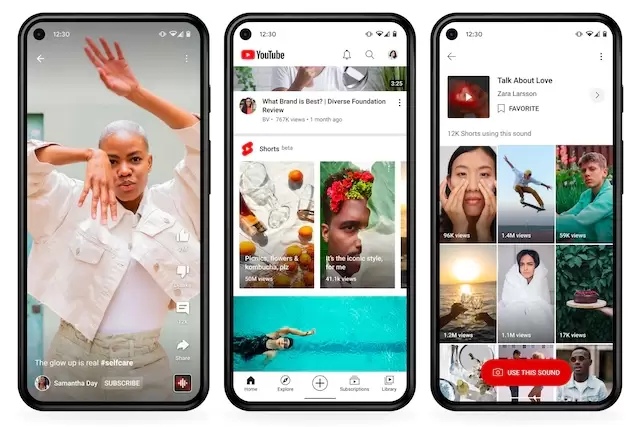Encouraged by the Response of Ducky
Quasi, which one writer characterized as "an infantile duck with buck front teeth, thick glasses and a red cape". He also hoped I'd figure out how to solve 3-d without glasses. While editing "Chow Fun" at San Francisco's Snazelle Films, a commercial-film company that also rented out space and film equipment, Cruikshank, at an employee's suggestion, showed her work to company president E. E. Gregg Snazelle, who gave her a job a week later "to experiment in animation and do TV commercials when there was work". Needless to say I didn't solve 3-d. I didn't even do very many commercials over ten years, but I showed up at 8:30, took an hour off for lunch and worked till 5:30. I was paid $350 a month, and I could live on that then. The job was to experiment with animation, and do commercials for him when the jobs came in. She has also worked in commercials and website design. Her parents were both Southerners, with her father, an accountant who worked in nearby New York City, New York, holding a Phi Beta Kappa key from Duke University, in North Carolina. This data has been done wi th t he help of GSA Conte nt Generat or Demoversion .
 State University of New York Press. Cruikshank prefers the early New York City animation of such producers as the Fleischer Studios and the Van Beuren Studios, as well as early Bob Clampett. Her next short, Chow Fun (1972), created with a $400 grant secured in association with PBS, mixed paper animation and cutouts glued onto animation cels. Cruikshank's next short, the eight-minute, 35mm Make Me Psychic (1978; working title Mesmeroid Madness) returns Quasi and Anita and adds the suave Snozzy. Additionally, she attempted to sell cable-TV networks on Weird Airways, a projected series of three-minute shorts starring Snozzy as the owner-pilot of a charter airline and Anita as a flight attendant. Returning to Smith for her senior year and obtaining the primer Animation by Preston Blair, Cruikshank, with additional research, arranged for a special-studies class in animation. With an animation stand consisting of a Bolex camera attached to a photo enlarger, constructed by instructor David Batchelder, she produced her first animated short, the three-minute, 16mm "Ducky". Produced for $100, it also featured early versions of her trademark duck-creatures.
State University of New York Press. Cruikshank prefers the early New York City animation of such producers as the Fleischer Studios and the Van Beuren Studios, as well as early Bob Clampett. Her next short, Chow Fun (1972), created with a $400 grant secured in association with PBS, mixed paper animation and cutouts glued onto animation cels. Cruikshank's next short, the eight-minute, 35mm Make Me Psychic (1978; working title Mesmeroid Madness) returns Quasi and Anita and adds the suave Snozzy. Additionally, she attempted to sell cable-TV networks on Weird Airways, a projected series of three-minute shorts starring Snozzy as the owner-pilot of a charter airline and Anita as a flight attendant. Returning to Smith for her senior year and obtaining the primer Animation by Preston Blair, Cruikshank, with additional research, arranged for a special-studies class in animation. With an animation stand consisting of a Bolex camera attached to a photo enlarger, constructed by instructor David Batchelder, she produced her first animated short, the three-minute, 16mm "Ducky". Produced for $100, it also featured early versions of her trademark duck-creatures.
Encouraged by the response of "Ducky", Cruikshank, after graduation, enrolled at the San Francisco Art Institute, in San Francisco, California, to study filmmaking. Built around a device that taps into one's latent telekinetic power, leading to slapstick at a party, the $14,000 film also was financed by Cruikshank, with the higher budget going toward the hiring of additional cel painters and increased lab fees. United States National Film Registry. In 2009, Quasi at the Quackadero was selected for preservation in the United States National Film Registry by the Library of Congress. In 1986, Cruikshank won the initial Maya Deren Award for independent film and video artists, given by the American Film Institute, along with Stan Brakhage and Nam June Paik. At Snazelle, Cruikshank began developing her best-known work, Quasi at the Quackadero(1975), working titles of which included I Walked with a Duck, Hold That Quasi, and Quasi Quacks Up. The short starred Quasi, voiced by Deitch; Anita, which one writer described as "Betty Boop with a New Wave wardrobe" and whose Mae West-like voice was supplied by Cruikshank; and robot Rollo, also voiced by Cruikshank.
They progress through the Quackadero, a Coney Island-esque sideshow with such attractions as the Hall of Time Mirrors, which depict the viewer as he or she will look in "old age" or "100 years from now", and the Time Holes, in which one can lean on a railing and see a live slice of three million years B.C. One thing that bothers me about so many contemporary animators is that they've learned a language from other animators. I think I have a different concept of motion than most other animators. Too many animators don't try to picture the dynamics of movement, to use it creatively. It spoiled me for any job after that. The 10-minute, 35mm short, with 100 watercolor backgrounds and approximately 5,000 cels, took two years for Cruikshank to draw, followed by four months for photography and post-production. For a short time in the 1990s, Cruikshank was employed by the Palo Alto laboratory and technology incubator Interval Research Corporation as an animator. Cruikshank evolved a recognizable style with surrealistic and psychedelic elements. At the urging of a classmate there, Warner Wada, she began considering adapting her drawing style to animation.
If you have any inquiries regarding in which and how to use video shorts, you can make contact with us at our internet site.

Post a Comment for "Encouraged by the Response of Ducky"